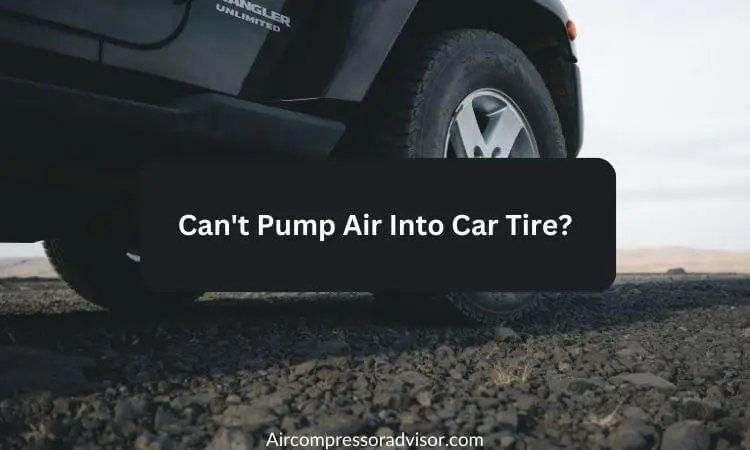Can't Pump Air Into Car Tire (Causes And Solutions)

Flat or underinflated tires are one of the most common issues faced by car owners and in such situations, the first thing that comes to mind is to pump air into the tires.
However, sometimes despite our best efforts, we may not be able to pump air into the car tire which can be a frustrating experience especially if you are in a hurry or in the middle of a long journey. So in this article, I will discuss the reasons why you can't pump air into a car tire and what steps you can take to resolve the issue so without any further ado let's take a look at it.
Why Can't I Pump Air Into My Car Tire?
There are several causes on why you may not be able to pump air into your car tire below are some of the most common reasons:
Valve Stem Is Damaged Or Broken:
The valve stem is the small metal or plastic stem that protrudes from the tire and is used to inflate or deflate the tire. If the valve stem is damaged or broken air will not be able to enter the tire.
Tire Bead Is Not Seated Properly:
The tire bead is a part of the tire that sits on the rim and if the tire bead is not seated properly then air will not be able to enter the tire.
Valve Core Is Stuck:
The valve core is the small metal pin that is inside the valve stem and is responsible for regulating the airflow and if the valve core is stuck then air will not be able to enter the tire.
Valve Stem Is Cogged:
Over time, dirt as well as debris, can accumulate inside the valve stem causing it to become clogged and this will prevent air from entering the tire.
Tire Is Damaged:
If the tire is punctured or has a hole in it, air will escape as soon as you try to pump air into it.
How Can I Resolve The Issue?
If you are unable to pump air into your car tire here are some steps you can take to resolve the issue:
Check The Valve Stem:
Inspect the valve stem for any signs of damage and wear or tear and if the valve stem is damaged or broken you will need to replace it.
Repair The Tire:
If the tire is punctured or has a hole in it, you will need to repair it before attempting to pump air into it. You can use a tire repair kit to seal the puncture or hole.
Check The Valve Core:
Use a valve core tool to remove the valve core from the valve stem and inspect the valve core for any signs of damage or wear and tear. If the valve core is damaged or stuck you will need to replace it.
Clean The Valve Stem:
Use a small brush to clean out any dirt or debris that may be clogging the valve stem.
Reseat The Tire Bead:
Remove the tire from the rim and reseat the tire bead properly. Make sure that the tire is properly seated on the rim before attempting to pump air into it.
Frequently Asked Questions (FAQ):
Why Does My Tire Keep Losing Air?
If your tire keeps losing air then it may be due to a puncture or leak in the tire. You should inspect the tire for any signs of wear or damage.
Can I Inflate My Tire With A Bicycle Pump?
Yes, you can inflate your tire with a bicycle pump however, it may take longer to inflate the tire as the pressure output of a bicycle pump is lower than that of a car tire pump.
How Often Should I Check My Tire Pressure?
You should check your tire pressure at least once a month as this will help ensure that your tires are properly inflated and can help prevent issues such as uneven wear or tear and poor fuel efficiency.
Why Is Air Not Going Into My Tire Valve?
Air may not be going into your tire valve due to a variety of reasons such as a damaged valve stem, a clogged valve core, a faulty valve stem cap, or a damaged tire. So it is recommended to inspect and replace any damaged or faulty components and to consult a professional if the issue persists.
Conclusion:
Being unable to pump air into your car tire can be a frustrating experience. However, by understanding the reasons why this may be happening and taking the appropriate steps to resolve the issue you can quickly get back on the road. Remember to regularly check your tire pressure and inspect your tires for any signs of damage or wear and tear to help prevent issues from occurring in the first place. If you find this article helpful then kindly share it with your friends and have a nice day.